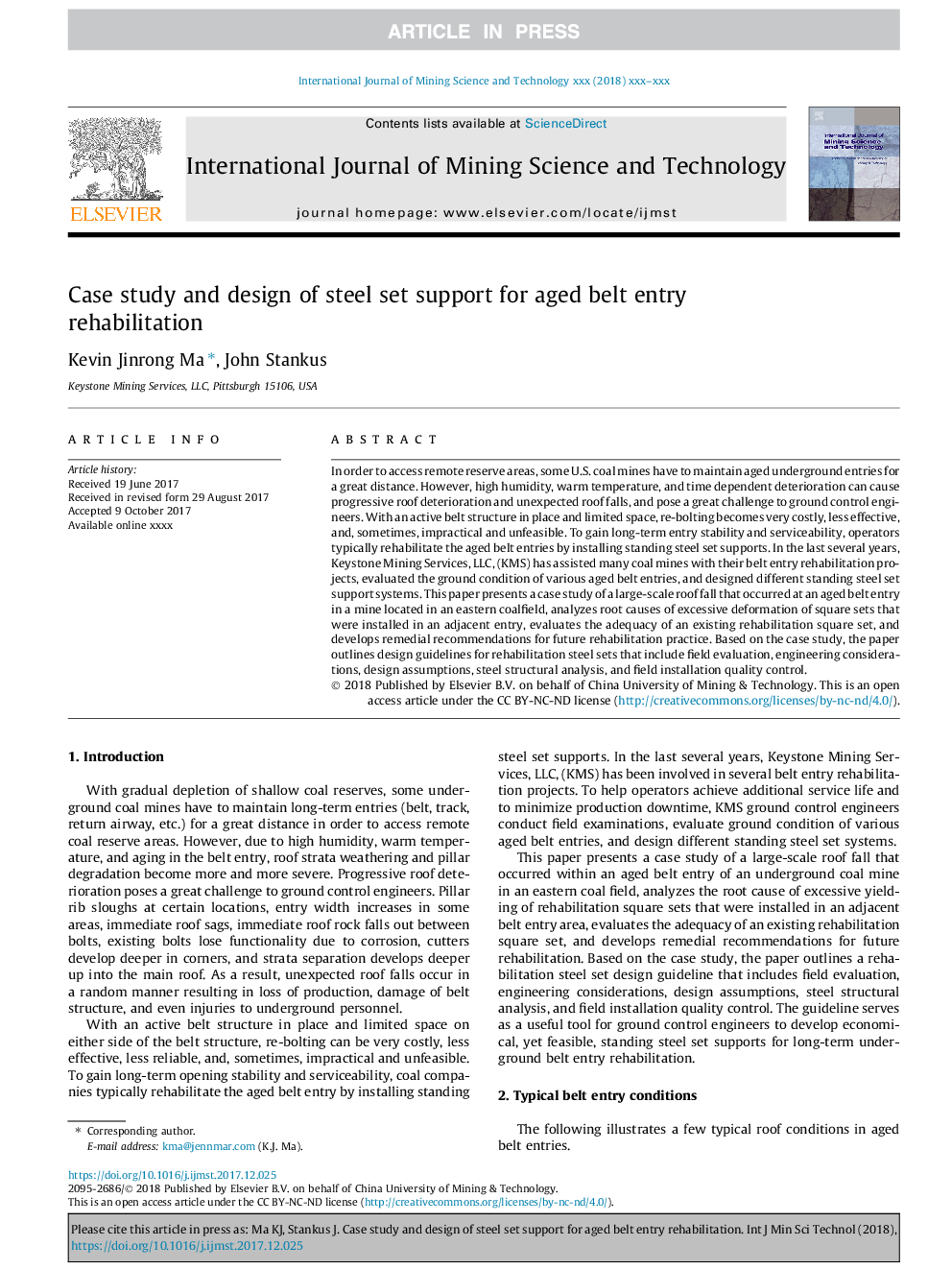| Article ID | Journal | Published Year | Pages | File Type |
|---|---|---|---|---|
| 6747828 | International Journal of Mining Science and Technology | 2018 | 6 Pages |
Abstract
In order to access remote reserve areas, some U.S. coal mines have to maintain aged underground entries for a great distance. However, high humidity, warm temperature, and time dependent deterioration can cause progressive roof deterioration and unexpected roof falls, and pose a great challenge to ground control engineers. With an active belt structure in place and limited space, re-bolting becomes very costly, less effective, and, sometimes, impractical and unfeasible. To gain long-term entry stability and serviceability, operators typically rehabilitate the aged belt entries by installing standing steel set supports. In the last several years, Keystone Mining Services, LLC, (KMS) has assisted many coal mines with their belt entry rehabilitation projects, evaluated the ground condition of various aged belt entries, and designed different standing steel set support systems. This paper presents a case study of a large-scale roof fall that occurred at an aged belt entry in a mine located in an eastern coalfield, analyzes root causes of excessive deformation of square sets that were installed in an adjacent entry, evaluates the adequacy of an existing rehabilitation square set, and develops remedial recommendations for future rehabilitation practice. Based on the case study, the paper outlines design guidelines for rehabilitation steel sets that include field evaluation, engineering considerations, design assumptions, steel structural analysis, and field installation quality control.
Keywords
Related Topics
Physical Sciences and Engineering
Earth and Planetary Sciences
Economic Geology
Authors
Kevin Jinrong Ma, John Stankus,
